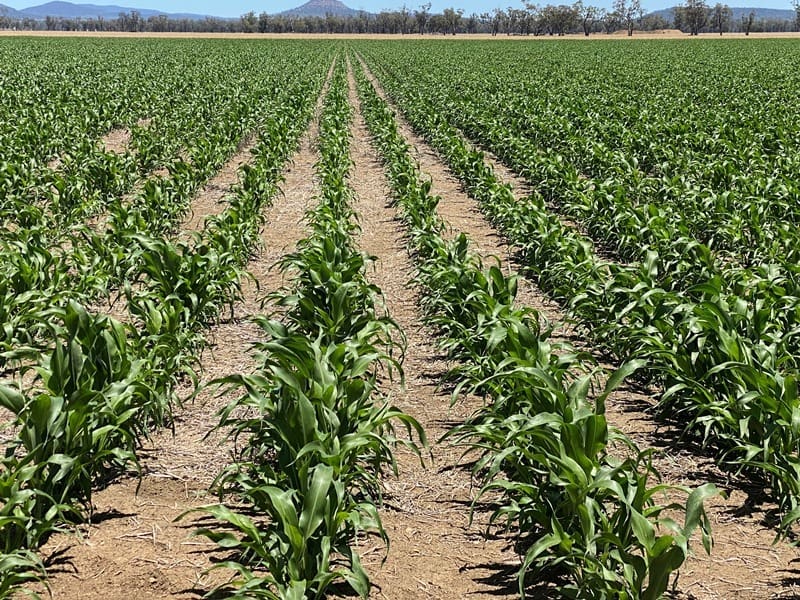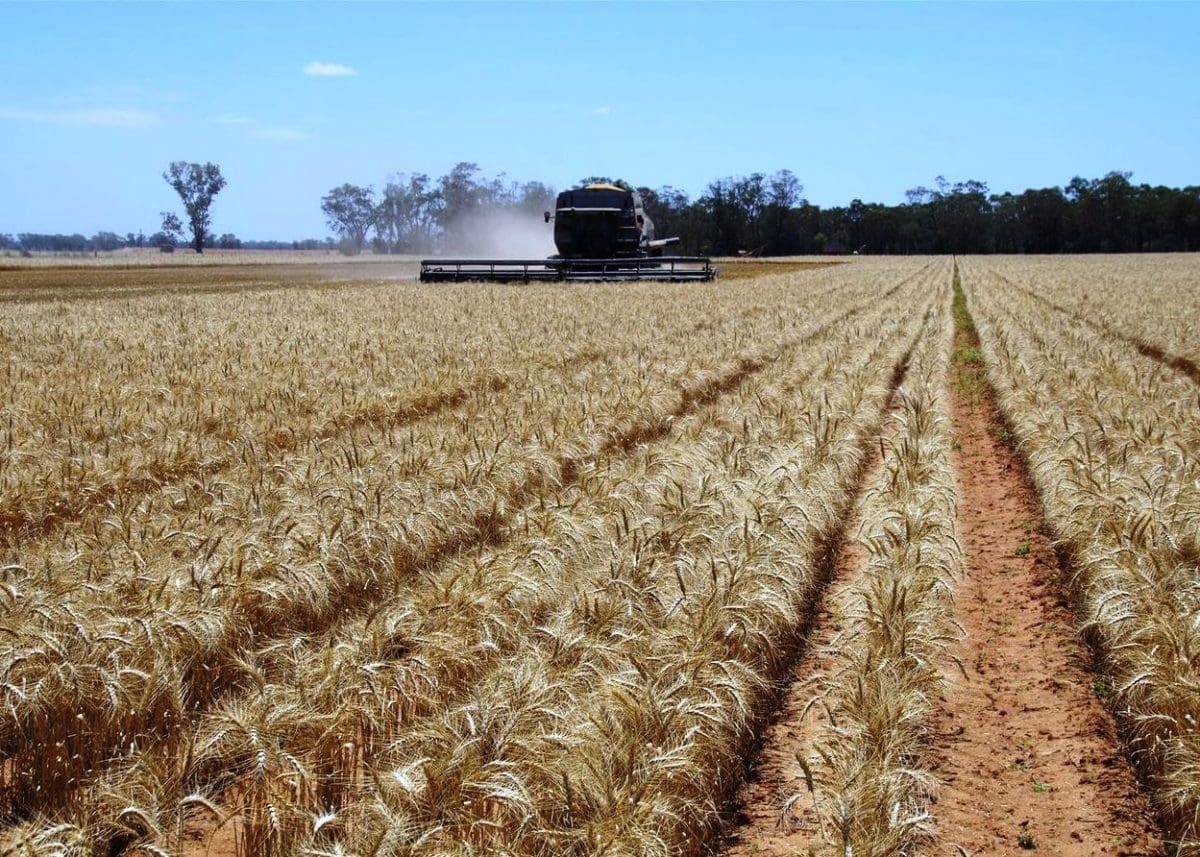
Weroona at Gunnedah is to be auctioned on 16 December and includes this crop of sorghum. Photo: Moree Real Estate
A RUN of properties in north-west New South Wales is going under the hammer in a sign of a resurgence in competition for smaller holdings in premium cropping country.
It follows three years of drought, when values rose from 2016 levels to reflect overall strength in agricultural land as an asset class, but sales activity contracted severely.
While plenty of properties were listed, family farming operations from within the region were unable to borrow money to buy them, either because of their own drought-affected cashflows, or an unwillingness of banks to lend, or both.
Auctions fell in popularity as a function of reduced buyer competition, and made selling privately or through expressions-of-interest (EOI) campaigns the preferred method of selling holdings large and small during the 2017-19 drought.
Drought did not kill off sales altogether, and some major private and EOI transactions took place in the wider Moree district, including several last year.
In terms of area purchased, funds with ready equity appear to have been better positioned to expand in the region during the drought.
Examples include Auscott’s sale of Midkin to the locally owned Australian Food and Fibre and the Canadian Public Sector Pension Investments Board fund.
Macquarie’s Viridis Ag also was active, purchasing Oodnadatta Farms from Hugh Ball and family, Grainfields from US investment fund TIAA-CREF, and Brudle Park from the wind-up of Ceres Ag.
Through Nuveen, TIAA-CREF also bought Roger and Annette Turnbull’s Wallam and Roydon.
In private local sales during the drought years, the Cotter family’s sale of Prospect Downs and Bonnie View at Biniguy was the headliner.
Liquidity rising
While entities representing offshore interests need to have their proposed purchases vetted by the Foreign Investment Review Board (FIRB), private Australian operators can move quickly if they have finance lined up.
Therefore, it appears auctions targeting domestic buyers are set to provide the kind of liquidity the north-west NSW market has been lacking in recent years.
Blocks and small farms are already changing hands.
Agents report the volume of sales has picked up through this year, and auctions are set to test the value of quality holdings now that the first good winter-crop harvest since 2016 is in the bin.
At Narrabri, Nutrien Harcourts agent James Thomas reports the sale of the 300-hectare Sutherland Park at Wee Waa for $745,000 under the hammer last week to a mixed-farming family from Rowena chasing a base closer to town.
“There’s activity in the market again.”
He said this followed the slowdown in 2018, which saw a halving of sales volumes from the previous year, and the same again in 2019.

Sutherland Park at Wee Waa sold at auction last week. Photo: Nutrien Narrabri
Mr Thomas said the lending environment appears to be more favourable for farmers than it was during the grip of the drought, and in the wake of the Royal Commission into Misconduct in the Banking, Superannuation and Financial Services Industry.
“Last year we had some fantastic properties come forward, but cash flow was a problem.
“The feedback from clients now is that banks are more receptive to lending.”
“When markets are strong and families are in a position to buy, good places will go to auction because they know there’s competition.”
He said buying interest was coming mostly from the wider region, and from within districts.
“There are always people from western regions looking to diversify into the east in higher-rainfall areas, and people from the east chasing scale in the west.”
Properties are coming forward for a number of reasons, including retirement, and winding up of partnerships.
Mr Thomas said another driver was the desire to realise capital gain of around 8-10 per cent per annum, in line with the global trend of agricultural land.
“Some blocks that were bought as add-ons are being sold by people who want to reinvest that capital.”
Under the hammer
Among the listings to go under the hammer this month with Moree Real Estate are Weroona at Gunnedah, Wattombri at Garah and Currawee at Ashley.
Weroona is going to auction on 16 December to wind up a partnership comprising Liverpool Plains Farming, Victorian company Tarnpirr and Stuart and Lyndall Tighe’s Boolah Holdings.
Located 10 kilometres north-west of Gunnedah covering 1279ha, Weroona includes 210ha of irrigation and 1029ha of cultivation, with the balance being grazing and support land.
Included in the sale is 152ha of sorghum growing on irrigation country.
Improvements include two 100-tonne silos, a machinery shed and hay shed, cattle yards and two cottages.
Weroona’s water comes from bores, and includes a 364-megalitre Upper Namoi licence. Annual average rainfall is 530 millimetres.
Under current management, the property has grown sorghum and cotton over summer, and barley, chickpeas and pasture over winter.
The 485ha Currawee at Ashley, 30km north of Moree, is going to auction on 17 December.
It has an annual average rainfall of 575mm, good improvements, and 407 arable hectares.
A feature of the property is grain storage, with two 1500t bunkers, a 300t grain shed and three 350t flat-bottom silos plus two 70t conical silos, as well as a workshop, hayshed and homestead.
Going to auction on 18 December is Wattombri, located 68km north-west of Moree in the Garah district, covering 1760ha, it includes 920ha of cropping country with another 100ha of potential cultivation, and the balance grazing.
Wattombri has grown cotton, mungbeans and sorghum over summer, and barley, chickpeas, faba beans, oats and wheat over winter on an annual average of 550mm.
Improvements include a homestead, cottage, grain shed, machinery shed, workshop and cattle yards, as well as two 100-tonne silos.
Earlier this year, auctions in north-west NSW were few and far between, but included Tourable at Mullaley on 3 April.
It was passed in, and later withdrawn from the market due to the improved cropping outlook brought about by rain earlier this year.
Grain Central: Get our free cropping news straight to your inbox – Click here

HAVE YOUR SAY